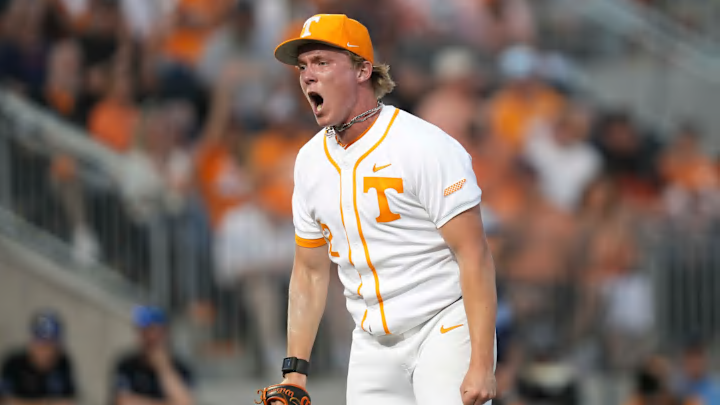The 2025 MLB Draft certainly didn't shake out the way the St. Louis Cardinals, or likely anyone else for that matter, expected. The Washington Nationals shocked the world at No. 1, forgoing Ethan Holliday and Kade Anderson to select prep shortstop Eli Willits — a player whom many mock drafts had tied to St. Louis in the days leading up to the draft.
But John Mozeliak didn't panic. He knew there was still plenty of talent on the board, and he wound up with one heck of a consolation prize, selecting Tennessee left Liam Doyle at No. 5 overall. Willits is awfully talented, and his combination of contact skills and grit at shortstop profiled like the perfect Cardinals player. But Doyle might be a cleaner fit for this organization's needs, and a rotation that has emerged as a sore spot in recent years all of a sudden is shaping up to be a potential strength in the future.
Doyle is just the latest in an increasingly long line of enticing young pitching prospects that the Cardinals have accumulated, and a look at how the team's rotation might shake out in 2026 should have fans feeling awfully excited.
For more news and rumors, check out MLB Insider Robert Murray’s work on The Baseball Insiders podcast, subscribe to The Moonshot, our weekly MLB newsletter, and join the discord to get the inside scoop during the MLB season.
Liam Doyle scouting report: Cardinals land a hard-throwing lefty
Any discussion of Doyle has to start with his bear of a fastball, one that can get up into the triple digits. He pounds the zone, and his splitter, slider and cutter all might get to at least above-average in time; it's no wonder he was utterly dominant in the SEC in 2025, with a 3.20 ERA and a whopping 164 Ks in 95.2 innings of work.
There’s real reliever risk here thanks to his limited repertoire – he was extremely fastball-heavy at Tennessee – and a max-effort delivery that often comes at the expense of his command. (His secondaries, in particular, often catch too much of the strike zone when he doesn't want them to.) But lefties who throw that hard, throw strikes and throw deep into games don't come around all that often, and the Cardinals got themselves one in this draft.
Projected Cardinals rotation in 2026 after drafting Liam Doyle
Here's how things might wind up looking by the middle of next season for the Cardinals.
Position | Player |
|---|---|
1 | Sonny Gray |
2 | Quinn Mathews |
3 | Matthew Liberatore |
4 | Michael McGreevy |
5 | Tink Hence |
6 | Liam Doyle |
7 | Andre Pallante |
That's seven deep, only one of whom wasn't drafted by the organization. There is substantial depth waiting in the wings, and the team should finally rid itself of Miles Mikolas an Erick Fedde confident that it has the ability to upgrade internally.
Gray doesn't seem like he's going anywhere any time soon, not after he was reticent to waive his no-trade clause last winter. Liberatore has taken a major step forward so far this year, while McGreevy has looked promising when given the chance. (Granted, that's been all too infrequently.) Mathews, the team's top pitching prospect and one of the best in the sport, is just waiting for the call, while Tink Hence is one run of health away from banging down the door to the Majors himself. Add in Doyle to the mix, and suddenly there are more pitchers than there are rotation spots.
And that's not even allowing for the possibility that Chaim Bloom takes some newfound payroll flexibility next offseason and applies it to, say, Zac Gallen, or even Ranger Suarez. Banking on young players to make the leap at a young age always comes with some risk, but all of the names above offer reason to believe that they can be at least viable rotation optoins starting next season. If one of them turns out to be more than that, or the team invests in a starting pitcher on the open market, there's no telling what this team might be able to do.
